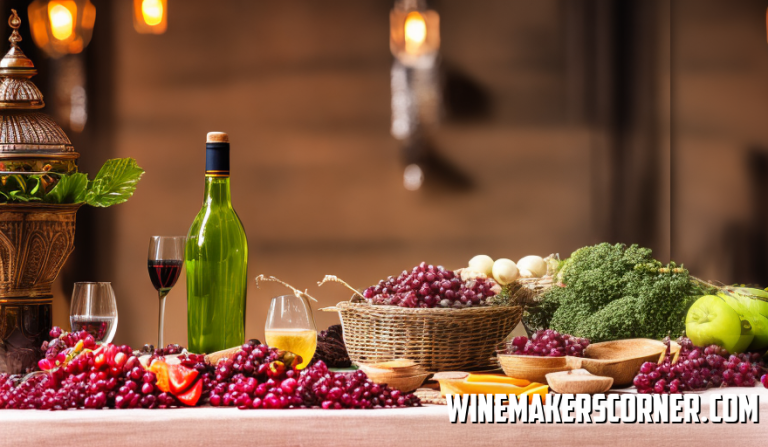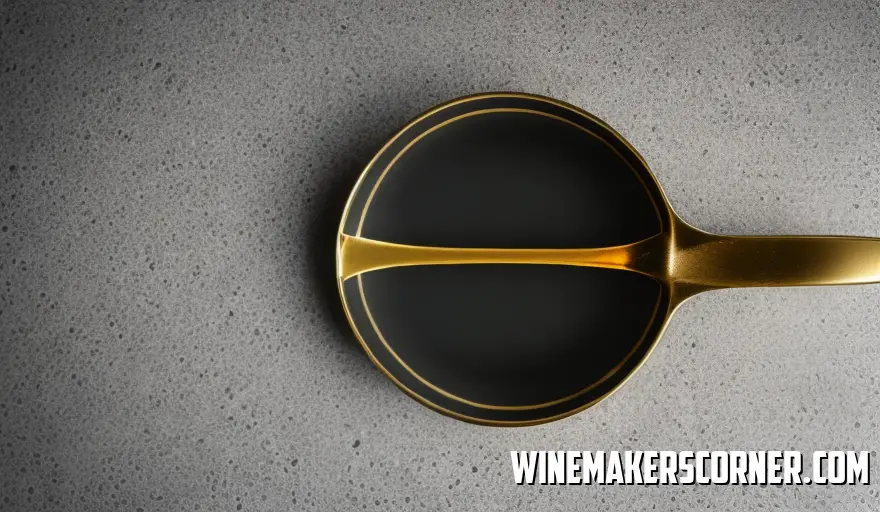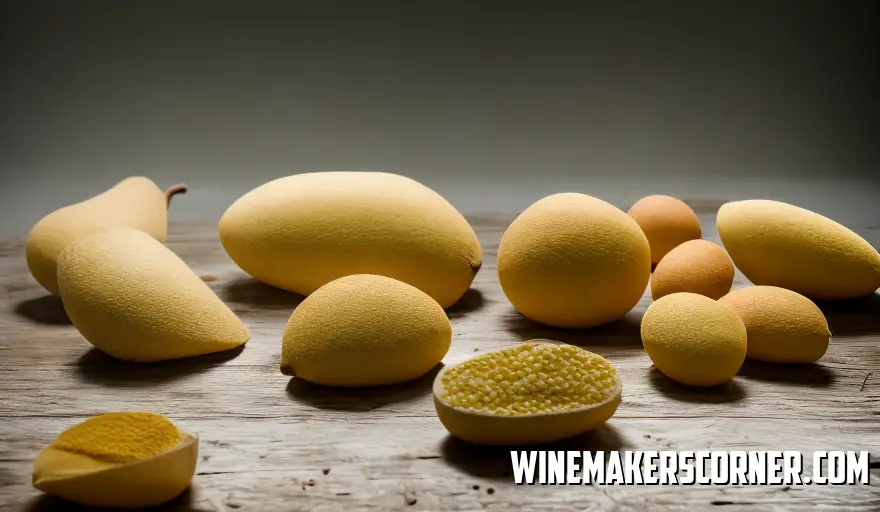India is phenomenal for its picturesque scenes, cultural richness, and scrumptious food. Did you know its also captivating in wine making? Lush vineyards drenched in a breathtaking sunset as the scent of ripening grapes fills the air embodies this countrys flourishing wine industry. But how about producing your own bottle of wine at home rather than purchasing from stores? Our guide will immerse you into an alluring journey of Indian home winemaking! You’ll learn about crafting your blend with ease exploring intriguing Indian wine recipes and indulging in tantalizing local cuisine pairings to fully experience this spirited adventure. Uncorking has never been more thrilling—lets delve right into it with your trusty corkscrew!
Understanding the Indian Wine Landscape
India’s wine landscape reflects a diversity of flavors based on its rich history and ambitious trends – a truly fascinating mix! Today more than ever before, Indians are venturing into producing their own homemade wines as serious hobbyists rendering it another unique element.
Viticulture finds favorable breeding grounds across various climates found throughout India; encompassing diverse terrains from Rajasthan’s arid plains to Western Ghat’s cooler hills – each contributing individualistic varietals that produce wines unique only to them. The selection consists not only but including indigenous grape varieties like Bangalore Blue but also non-native favorites like Chardonnay and Cabernet Sauvignon.
Soma – an ancient ceremonial potion with fermented characteristics – is a clear indicator of the country’s longstanding tradition of wine-making. Now, the Indian winemaking process today involves mixing modern techniques with traditional methods to produce wines that rivals any in the world. To master the art of winemaking in India, it is critical to have a thorough understanding of this distinctive landscape.
Through experimenting with indigenous ingredients and variations across regions it becomes possible to create wines that are nothing short of exceptional in capturing the true spirit of India. To sum up uncovering the vast wine history in this country provides unparalleled insights for those who wish to embark on their personal home winemaking venture.
Harnessing this understanding about its diverse complexities will enable them to produce a harmonious blend bursting with flavors reflective of Indias unique terroir.
Choosing the Right Grapes for Your Wine
Selecting the right grapes for homemade wine production in India isn’t something to take lightly – it can make all the difference between disappointment and delight when enjoying your finished product. Your ultimate wines flavor profile, aroma, body weight (or “character”) all hinge significantly on the type of grape you select from amongst numerous available varieties – but don’t let this intimidate you! This guide aims to help make your journey through this essential aspect easier.
Indias diverse climate has a big impact on what types of grapes thrive in different regions; for example: cooler places like Himachal Pradesh or Kashmir are best suited for European grapes such as Merlot or Chardonnay while warmer areas around Maharashtra prefer native varieties like Bangalore Blue or Anab e Shahi . A crucial element in determining which variety works best?
Familiarity with each types taste and flavor profile. For instance Cabernet Sauvignon yields full bodied red wines with robust tannins and dark fruit flavors whereas Chardonnays characteristics are crisp white wines with notes of apple, citrus, and pear. Without a doubt experimentation is key in the world of home winemaking as well. By blending various types of grapes together you can achieve truly distinctive and delightful flavor profiles that cater specifically to your own palate.
For instance if you mix Cabernet Sauvignon with Merlot the result will be a red wine with smoother tannins than either grape on its own! But just be aware that finding high quality grapes could pose a challenge depending on where you live in India; it might require seeking out local vineyards or farmers’ markets instead of relying on supermarket brands alone. Always keep an eye out for any signs of spoilage when selecting fruit – fresh ingredients are essential! All in all selecting the perfect grapes takes time and patience as you experiment with different kinds suited to different regions within Indias varied climate zones. Ultimately though by staying true to your own tastes and interests in winemaking while honoring Indian viticulture traditions along the way – theres no telling what kind of inspiring homemade wines await!
Essential Equipment for Home Wine Making
Are you excited about making your own wine at home in India? Well then before jumping into the process itself gather all the necessary equipment first! This step is essential as it ensures a smooth operation resulting in a delicious final product. Heres our guide on what equipment you need:
Firstly get yourself a primary fermenter – this large food grade plastic or stainless steel container holds crushed grapes kickstarting fermentation. Choose one with an airlock and lid as it plays an important role in controlling oxygen exposure.
Next up is investing in a hydrometer which accurately measures sugar levels; allowing for precise tracking of fermentation progress while also determining alcohol content.
When transferring wine between containers by leaving sediment behind without any hassle siphoning equipment is necessary. This includes a racking cane and tubing and don’t forget the bottle filler attachment for easy bottling!
Talking about bottles go for dark glass bottles with corks or screw caps to store your homemade wine.
For an authentic touch use traditional Indian style glass bottles called “bhapkas. “
Lastly the wine press is a must have – manual or hydraulic versions are available in India.
To create a quality wine with balanced flavors, its important to gently extract juice from grapes while simultaneously separating the skins and seeds. Maintaining sanitation is another vital aspect of winemaking. By using sanitizing solutions like potassium metabisulfite or iodophor you can keep all equipment clean and prevent spoilage of your creation. In conclusion don’t let the thought of making wine at home intimidate you. Take things slow and start small before working up to bigger batches! Once you have these essentials down pat making homemade Indian wines will become second nature – plus theres nothing quite like savoring a glass with friends while reflecting on your hard work.
Cheers!
The Fermentation Process: A Step-by-Step Guide
Indian wine culture is on the rise, inspiring many to test their hand at home winemaking. However, if you’re looking to create a worthwhile product- understanding how fermentation works is key. Here we’ll break down this critical step into comprehensible parts.
Quality grapes are integral when crafting excellent wine; thankfully Indian vineyards offer an abundance of options from indigenous Dindori Shiraz or classic varietals like Cabernet Sauvignon that can influence your final wine’s flavor profile considerably.
After picking out choice grapes comes crushing them gently; traditional methods involve stomping these luscious fruits underfoot while contemporary methods utilize devices such as grape crushers or sanitized wooden spoons for small scale batches.
The last stage entails introducing yeast into the crushed-grape and juice mixture (must), which aids in transforming sugar into alcohol during primary fermentation- a critical factor to winemaking.
Begin by keeping your must in a sanitized container for 5-7 days at room temperature (20-25°C). Give it daily stirs to keep an eye on progress during fermentation.
Watch for carbon dioxide bubbles as yeast conversion initiates and primary fermentation nears its completion. Moving forward, expect flavors to continue developing without any exposure to air during secondary fermentation; lasting typically 2 weeks or longer.
When secondary fermentation concludes and no air escapes through the airlock, you’ll need to perform clarification by racking it again while leaving sediment behind.
Using bentonite or egg whites will ensure all impurities are removed effectively.
Your wine is now ready for bottling! Transfer it using a siphon tube before securely corking each bottle in a cool, dark place lying flat – from here on ageing plays a vital role in complexity development! You’ve put a lot into making this wine – whether you waited mere months or let it age for several years – so now is the perfect time to savor what all that effort has produced.
Gather some good company around you crack open that bottle of homemade Indian wine, and revel not only in its taste but also in what learning this skill has taught you about dedication and patience.
Aging and Bottling Your Homemade Wine
Aging and bottling are critical stages in any home winemakers journey – without proper maturation time even the best made wines can fall short of their potential. In Indias burgeoning winemaking scene mastering this last step is a must do for enthusiasts who crave an unforgettable experience. Patience is key when it comes to letting wine age properly; no matter how tempting it may be to try your homemade batch right away hold off for at least a few months (longer if you have reds).
During this time various chemical reactions occur that transform grape juice into something far more complex and intriguing. Over time tannins soften and fruit flavors mix with other elements like oak or spice notes. To keep your wine in top shape its crucial to store it correctly – maintain a steady temperature between 12 15°C and protect your bottles from sunlight or strong odors. Once your home-brewed wine has reached its desired maturation level, bottling is one exciting but crucial stage that could make or break storage durability.
Your choice of bottles will depend on the specific type of wine: choose dark glasses for reds and clear/light-stained glasses for whites or rosés. Before any pouring begins, cleanliness maintenance is paramount by washing each bottle sequently with warm water and detergent followed by proper rinsing protocol. Quality corks combined with well-crafted closures are essential assets—the use of a corking machine easing this process and affordable options found online or local brewing stores.
Now comes the best part – filling those bottles with your lovingly crafted vino! Ensure that no sediment is disturbed while transferring the liquid from its fermenting vessel into individual bottles via a siphon hose. Leaving some headspace (about 1-2 centimeters) between the top of your wine and cork is vital to accommodate temperature changes’ expansion effects.
Lastly, store your beautiful, carefully filled bottles horizontally, keeping them moist for an airtight seal that prevents any oxygen from getting in. If creating one-of-a-kind homemade wines piques your interest seriously, labeling each bottle carefully with pertinent information such as the type of grape used in selecting your mix or blend alongside bottling dates would help keep track of inventory while determining which vintages are perfect for enjoyment purposes.
The artistry behind aging and bottling fabled concoctions from one’s abode requires patience coupled with an eye for detail all while being passionate about what this craft entails. Abiding by these tips guarantees optimal flavor delivery in each bottle; therefore making every sip worth savoring.
Troubleshooting Common Home Wine Making Issues
In India home wine making has become an art thats gaining immense popularity over time. However as more enthusiastic hobbyists take up this craft they may also encounter some common issues along the way. In order to ensure a smooth wine making experience for everyone involved – lets delve into the process of troubleshooting these problems together! One issue that frequently plagues homemade wines is off odor – often due to bacterial contamination or improper sanitation practices.
To combat this problem effectively and keep your wine smelling great – always make sure all equipment used is thoroughly cleaned and sanitized before use! Additionally consider using Campden tablets to kill any remaining bacteria. Another challenge many home winemakers face is stuck fermentation – caused by insufficient yeast nutrients, low temperature or high sugar concentration levels. To avoid being stuck with this setback during your next batch of wine making adventures – always maintain proper temperature and sugar levels while also adding yeast nutrient if necessary.
Lastly cloudy finished wines can be disheartening for budding winemakers who’ve put substantial effort into perfecting their craft.
Pectin haze happens to be a common culprit here – particularly in fruit wines; however you can fix this issue by adding pectic enzyme before starting fermentation to help break down pectin and get a clearer final product. When crafting homemade wines in India its not uncommon to encounter taste issues – perhaps the sweetness levels are too high or too low for your liking. But don’t lose heart! During stabilization adjusting sweetness can help you achieve the perfect flavor profile.
However don’t expect overnight success – finding that sweet spot takes time and practice. Besides aging is a vital factor in enhancing the quality of your homemade wine. While it might be tempting to indulge right after bottling allowing your creation to age for at least six months (if not longer) makes all the difference.
In summary exploring home wine making in India requires determination and patience when overcoming common obstacles. With a focus on troubleshooting and an unwavering commitment to refining your craft with each batch made delicious bottles of homemade wine will soon be gracing your shelves.
Exploring Different Indian Wine Recipes
Indias rich traditions and diverse culture have made it no stranger to the art of winemaking. Its long standing history with grapes dates back thousands of years ago when ancient communities began producing their own versions of this luxurious beverage. Nowadays many Indian home winemakers are still exploring various recipes that capture the essence of this ancient craft.
In this section we highlight some unique Indian wine recipes that showcase both intriguing flavors and delicious blends.
One recipe worth checking out is Bael fruit wine – made from Aegle marmelos; a native Indian fruit thats been revered for its medicinal properties throughout history. Turning it into a sweet & tangy flavored fermented drink requires ripe Bael fruits, sugar, water, yeast…and patience – as fermentation usually takes around two months.
For those willing to try something truly different yet delightful in terms of taste – banana wine hits just the spot! Utilizing overripe bananas (you know when they’re too spotty to eat) this recipe creates a smooth drink with subtle fruity notes.
Are you aware of how beneficial banana peels can be when used in winemaking? Their high tannin content contributes significantly to the structural integrity of your finished product. When mashed with water and sugar these peels create a favorable environment for your chosen yeast strain to flourish in.
And while we’re on the topic of unique ingredients have you tried Indian jasmine flower wine yet? This fragrant drink epitomizes Indias love affair with floral flavors – carefully crafted through fermentation practices designed to bring out its aromatic properties. Looking for more regional specialties?
North Indian Phalsa berry wine makes excellent use of this tart fruit traditionally used for making refreshing summer sherbets; while South Indian jackfruit wines are beloved by households across Kerala and Karnataka due to their fibrous pulp acting as an ideal filtering agent during fermentation. Indias eclectic range of wine recipes presents an unparalleled opportunity for home winemakers eager to delve into new dimensions of flavor and aroma.
Whether its the captivating Bael fruit or fragrant jasmine wines that pique your interest there are endless possibilities awaiting exploration in India. And at the end of your journey lies a smooth full bodied wine imbued with unique nuances and a signature jackfruit scent that will transport your senses to another level. So embrace your adventurous side and see where it takes you – it just might surprise you!
Pairing Your Homemade Wine with Indian Cuisine
Elevate your dining experience by pairing Indian cuisine with homemade wine! The key is selecting a wine that balances and enhances your meals complex flavors as Indian dishes boast an array of spices and taste profiles that vary region to region. For instance spicy dishes like Vindaloo or Rogan Josh pair well with low tannin fruity wines such as homemade Shiraz or Zinfandel which soften the heat while enhancing each flavorful bite.
Tomato based curries such as Tikka Masala also pair excellently with these types of wines. While for aromatic dishes like Biryani or Korma opt for a home brewed Riesling or Chenin Blanc due to its acidity that cuts through its richness while highlighting their fragrant spices. When it comes to pairing your homemade wine with Indian cuisine there are a few things to keep in mind.
For example white wines tend to go well with seafood dishes from coastal regions like Goa and Kerala. Vegetarian dishes are also a staple of Indian cuisine so if you’re planning to pair your wine with lentils or paneer dishes look for a versatile wine like Merlot or Sauvignon Blanc that won’t overpower the flavors. For dessert Indian sweets like Gulab Jamun and Rasgulla can be paired with a late harvest Gewürztraminer or even a homemade dessert wine infused with local fruits like mangoes or lychees.
However its important to remember that pairing food and wine can be subjective and personal taste plays a big role. In conclusion pairing homemade wines with Indian cuisine is an adventure worth exploring. Take time to experiment and trust your palate as you enjoy the journey of discovery.
Hats off to you for taking on the exciting endeavors of home winemaking and culinary discovery!




